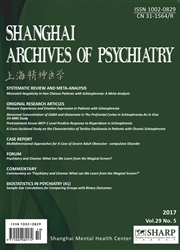

 中文摘要:
中文摘要:
目的探讨正常成人汉语句子结尾词匹配和非匹配事件相关脑电位(ERP)N400的特点。方法应用ERP仪,对58名19~63岁正常成人右利手受试者,进行汉语正常句子结尾词(匹配)与句子结尾歧义词(非匹配)N400的实验研究。结果正常成人中央区(Cz)、前额区(Fz)及顶区(Pz)脑区汉语句子结尾词匹配的N400平均潜伏期为364ms,平均波幅为8.9μV;非匹配的N400的平均潜伏期为409ms,平均波幅为12.9μV。正常成人各脑区匹配与非匹配的汉语句子结尾词的N400潜伏期、波幅比较有统计学差异。结论正常成人汉语句子识别的N400稳定、可靠;非匹配的汉语句子结尾词的N400潜伏期长,波幅高。
 英文摘要:
英文摘要:
Objective:Compare the N400 component of events-related potentials(ERP)among normal Chinese subjects when recognizing matched and mismatched words at the end of Chinese sentences.Methods:The ERP component N400 was recorded from the central zone(Cz),frontal zone(Fz)and parietal zone(Pz)areas in 58 right-handed normal adults aged 19-63 years old while they were reading Chinese sentences ending with matching words(congruent situation)or mismatching words(incongruent situation).Results:The combined means for the three areas of the N400 latencies and amplitudes were 364 ms and 8.9 μV in the congruent situation and 409 ms and 12.9 μV in the incongruent situation.For each of the areas assessed,the N400 latencies were significantly prolonged and the amplitudes were significantly increased in the incongruent situation compared to the congruent situation.Conclusion:The N400 component of the ERP elicited by a sentence discrimination task in normal Chinese adults is stable and reliable.N400 latencies are prolonged and N400 amplitudes are increased when test sentences end in mismatched words compared to when test sentences end in matching words.
 同期刊论文项目
同期刊论文项目
 同项目期刊论文
同项目期刊论文
 期刊信息
期刊信息
